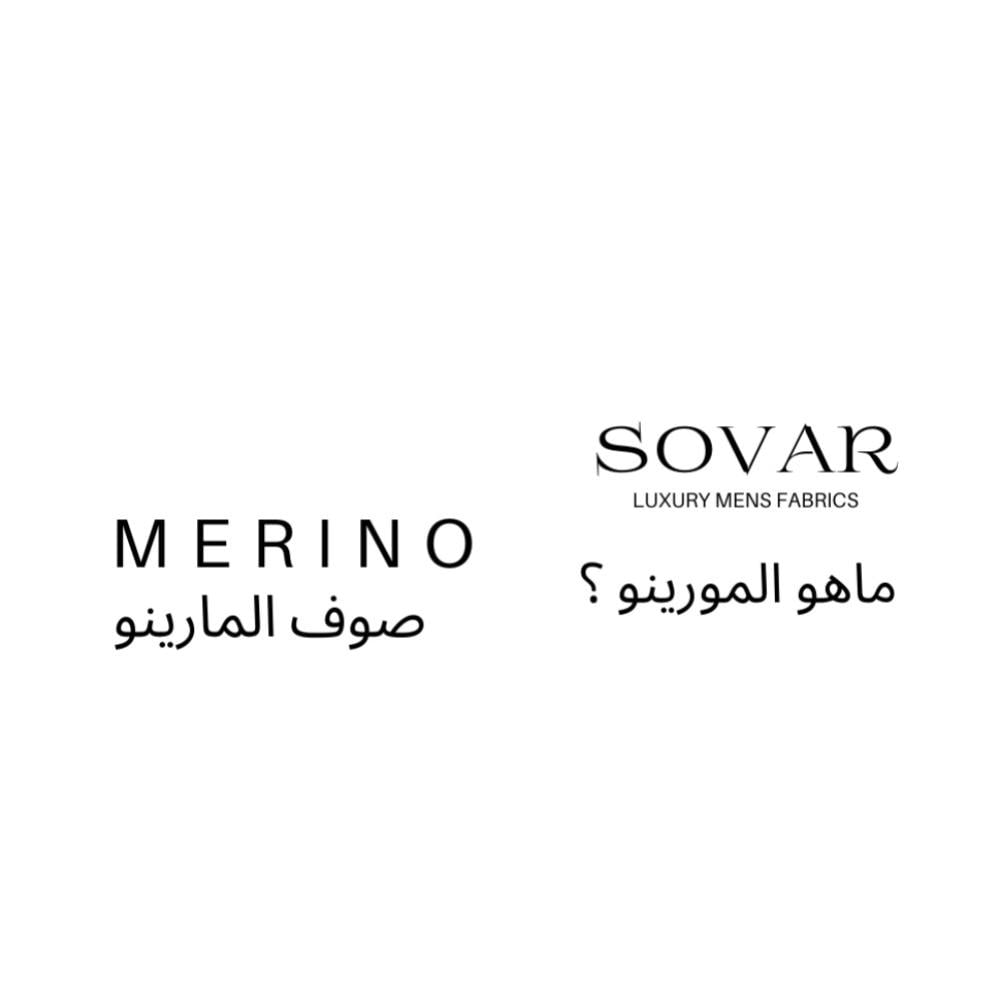Often referred to as the best natural fibre on the market, merino wool is incredibly soft, breathable and temperature regulating. Designed to protect sheep from the ever-changing climate they live in, merino wool is perfect for layering and wearing directly on the skin. In this guide from Sofar , we’ll explore what merino wool is, how it’s made, its benefits and why this fibre should definitely be part of your wardrobe.
What is merino wool?
Merino wool is a super-soft natural fiber that comes from the Merino sheep. It is soft, breathable, and moisture-wicking, making it ideal for base layers, socks, and undergarments. Merino sheep originate from Spain, and have been bred since the 12th century and were prized for their extremely fine, soft wool. Today, Merino sheep are raised in Argentina, Australia, Chile, New Zealand, South Africa, the United States, and Uruguay.
In general, wool is a flexible fibre made from the protective covering, known as fleece, of mammals with thick wool, most commonly sheep (but also rabbits, alpacas and goats). Each year, shepherds shear the wool of a living animal, which consists of countless individual wool fibres.
The diameter of wool fibers is measured in microns, where a micron is one millionth of a meter. The quality of wool and how soft or rough it feels to the touch is usually determined by the micron count. A finer micron or lower count means a softer wool, and merino wool is much softer than regular wool, making it moisture-wicking, comfortable to wear, and naturally sun-protective.
But what exactly is merino wool and why is it different from regular wool? Not all wool is created equal. There are wools that are designed to be worn close to your skin, and are comfortable, and that is merino wool. There are other types of wools that are designed to be more durable and heavier fabrics, and they are not designed to be worn close to your skin.
While other types of wool are known for the strength and durability that comes from their higher micron count, merino wool is finer, typically less than 22 microns. For comparison, the average human hair is between 50 and 100 microns. For this reason, merino wool is often used in clothing that comes into contact with the skin such as base layers, socks, and underwear, although it can also be made into suits and knitwear.
What is merino wool and how is it made?
To understand more clearly what merino wool is, you will need to know the steps of making it, which are divided into several stages that we explain below:
story
Different Merino breeds become ready for shearing at different rates. Some Merinos are sheared every two to three months, but others only become ready for shearing every six months or so. Merino sheep can produce between 3 and 18 kilograms of wool per year, and freshly sheared wool is often called “fat” because it is still saturated with the sheep’s skin oils.
Cleaning and combing
The greasy wool is then cleaned, graded and combed into long, thin threads. These combed threads are now ready for spinning.
spinning
Different types of merino wool are spun separately, then loaded onto bobbins in preparation for the weaving process.
Weaving or knitting
While most merino fabrics feature either plain weave or slash weave patterns, it is also possible to knit merino wool yarns using industrial knitting machines. For fabrics designed to feature multiple colors, individual yarns are dyed before the weaving or knitting process.
Dyeing and post-treatment
If merino wool is a single color, it is sometimes dyed after the yarn is spun or knitted into the fabric. Merino wool is also rarely subjected to waterproofing or other chemical treatments. However, because merino wool is naturally flame resistant, it is rare for this type of fabric to be chemically treated.
Discover now the beauty and comfort of luxurious merino wool that combines high quality and elegance. Whether you are looking for warm clothes or a unique piece for your daily look, merino wool is your ideal choice. Get now from our store "Sofar" the best men's wool fabric | Striped merino and experience the difference yourself.
Uses of merino wool
After knowing what merino wool is and how it is made, comes its uses. Textile manufacturers generally use merino wool in the clothing industry, and this fabric is used to a limited extent in home furnishings.
Uses in clothing
The most common use of merino wool is in sweaters. Because merino wool is made from microfibers that are just as soft or even softer than cotton, this material is ideal for lightweight sweaters that are worn directly against the skin. It is also possible to find shirts, blouses, and even tank tops made from merino wool.
In most cases, coarser forms of wool are used for this purpose, but merino wool can also be used to make formal jackets. Due to its durability, softness, and heat retention, merino wool is ideal for long underwear or base layers. It is possible to make basically any type of insulating garment with merino wool, but this type of fabric is usually reserved for casual or sportswear and is not usually used for formal or dressy clothing.
Uses in home furnishings
Merino wool is commonly used to make blankets. Used as a middle layer between sheets and comforters, merino wool has excellent insulating properties. Merino wool is also a popular material for blankets due to its luxurious softness and remarkable heat retention.
Advantages of merino wool and why is it one of the best fabrics used in clothing?
We can’t answer your question about what merino wool is without mentioning the benefits of this fabric. Merino is a premium outdoor fabric, so it’s commonly used in outdoor clothing. However, it can be more expensive than cotton and synthetic fabrics, and some people with sensitive skin find that their skin reacts to it. But if you’re debating whether this wool is right for you, here are some of its benefits.
Excellent ventilation
Air moves freely through merino wool garments thanks to the structure of the fibers. This speeds up the evaporation process and ensures that you stay cool and dry all day long. Unlike synthetic fibers that retain moisture and cling to the body, merino wool provides the wearer with another layer of support and comfort.
Quick drying
As well as being lightweight and breathable, merino wool is incredibly quick-drying, making it ideal for exercise as you'll sweat less and any moisture will evaporate instantly.
It does not require much care.
With its ability to absorb moisture and resist odors, merino wool is an incredibly low-maintenance fiber. Your merino wool garments will require less washing than synthetic fibers and blends, and a simple “cleaning” between washes will ensure your garments stand the test of time.
Odor resistant
Merino wool has excellent wicking properties, meaning it draws moisture away from the skin. Thanks to the basic structure of the fibres, sweating is less likely and odours are neutralised at the source. In the long run, this means your merino garments require less washing, increasing the life of your fabric.
Regulates temperature
The active nature of merino wool means that the fabric will respond to temperature changes on the wearer’s skin. In cold weather, the ultra-fine fibres trap air, keeping you insulated and in warmer climates, sweat can easily evaporate, keeping you cool and dry.
lightweight
Besides trapping heat and regulating temperature, ultra-fine merino wool is a lightweight, versatile fabric that is suitable for a variety of different occasions. It has all the warmth of a thicker fabric but without any of the weight, making it ideal for outdoor activities such as walking, climbing and running. It is also ideal for layering under your everyday clothing for another layer of protection and comfort.
Super soft and skin friendly
Merino wool is 1/5 the diameter of a human hair, making it the perfect fabric to wear directly on the skin. The fibers move with the wearer, and unlike coarser yarns, they bend out of the way so they won’t cause irritation or aggravate allergies. With naturally hypoallergenic properties, merino is even suitable for those with sensitive skin.
Sustainable
Unlike synthetic fibres, merino is a 100% natural, sustainable fibre that, when cared for properly, will last a lifetime. The sheep are sheared at various points throughout the year and their wool is renewed seasonally. As well as providing a beautifully soft garment for the wearer, the fact that our merino is not mixed with synthetic fibres means that under the right conditions, your knitwear will eventually biodegrade, releasing carbon-rich nutrients back into the soil.
Elevate your look with plain merino wool men's winter fabrics that combine softness, warmth and flexibility in every thread. Don't miss the opportunity and get it now and start designing your clothes with the highest levels of comfort and elegance with "Sofar".
How do I care for my merino wool clothes?
Finally, after you know what merino wool is and have decided to get it from our store, the following tips will help you take careful care of your merino wool clothes:
- Hand wash or machine wash below 30°C on gentle setting with low spin.
- Use a wool-specific cleaner or a mild, pH-neutral soap.
- Do not use bleach or fabric softeners.
- Use cold water when washing and rinsing wool. If you use hot water, it may shrink and damage the wool fibers.
- Do not wring or squeeze clothes. Squeeze out water and shape them back to their original shape before laying them out to dry.
- Lay flat on a surface when drying. Do not place in direct sunlight or near heat sources. If you hang clothes to dry, they may stretch or deform.
- Iron merino wool on low heat.
- Store merino wool clothes in a cool, dry place. Try to fold them rather than hang them.
- Do not store in a damp place or plastic bag. This can cause the wool to turn yellow and develop mold.
Frequently Asked Questions
Who produces merino wool?
Merino wool is mainly produced in Australia and New Zealand, which are the largest producers of merino wool in the world. It is also produced in some other regions such as Argentina and South Africa.
What is merino wool?
Merino wool is a type of wool that comes from the Merino sheep breed, and its threads are characterized by softness and high elasticity. It is used in the manufacture of luxurious and comfortable clothing due to its superior insulation and ventilation properties.
What are the great features of merino wool?
Merino wool offers exceptional comfort thanks to its lightness and flexibility, as well as its ability to regulate temperature, making it suitable for wearing in all seasons. It is also resistant to bacteria and does not absorb odors easily.
What is the staple length of merino wool?
The staple length of Merino wool ranges from 6 to 12 cm, and may be longer in some special breeds. This length allows for the production of very fine and soft threads, making the wool ideal for high-quality clothing.
In short, merino wool strikes the perfect balance between practicality and luxury. The combination of the above features makes it ideal for clothing that you want to stay comfortable in all day long, such as outerwear, base layers, and socks. Explore our collection of men’s winter fabrics at Sofar and order yours today. Once you experience what it feels like to wear merino wool clothing, you won’t regret it!
You may also like:


